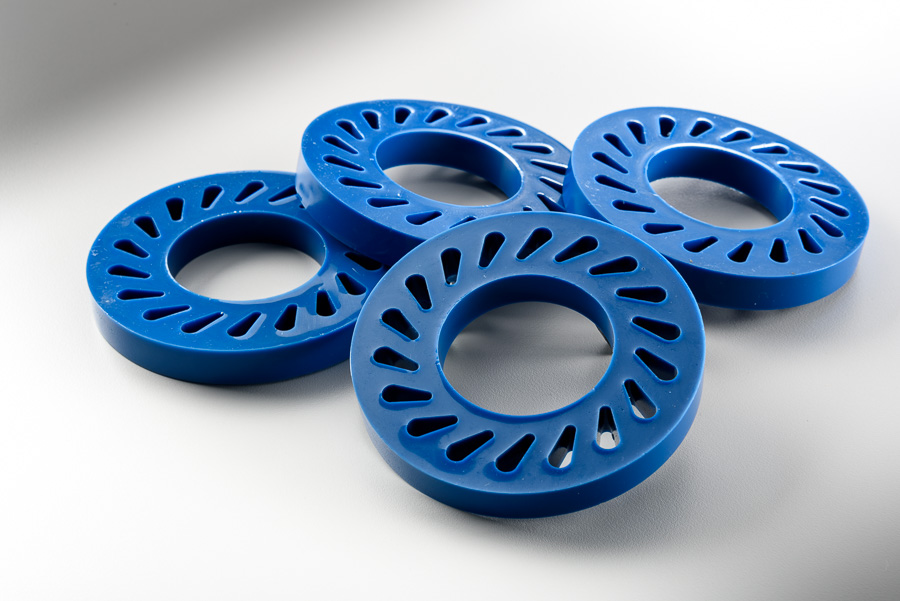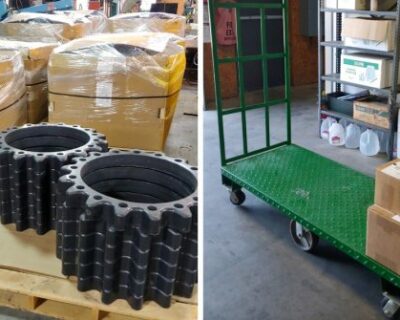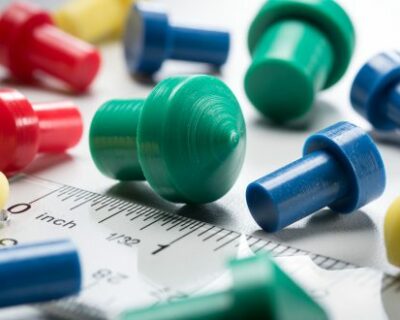Urethane is a unique material in many respects and offers engineers a variety of options with regard to solving application challenges. With the right formulation, urethane can outlast steel and aluminum – while also providing cost-effective and lightweight alternatives for common applications.
Urethane’s versatility makes it the preferred material for many industrial applications. Because it can be chemically bonded to differing substrates, urethane is an ideal solution for wheels and rollers, covered bearings, scrapers, bumpers, dunnage, and other custom industrial solutions.
Urethane versus metal
When compared to metal, urethane offers distinct advantages, including impact, abrasion and corrosion resistance. Urethane is flexible, quiet, and doesn’t readily conduct electricity. Urethane is easily molded into a variety of shapes and offers weight reduction, spark abatement, and reduced maintenance and replacement costs.
Increases in:
- Abrasion, impact, and corrosion resistance
- Shape configuration
- Formulation flexibility
- Noise reduction
Decreases in:
- Fabricating costs
- Weight
- Conductivity and sparking
- Impact and abrasion damage
- Replacement and maintenance costs
Urethane versus plastics
Due to the wide variety of plastics available, direct comparisons between plastics and urethane are somewhat more generalized. Where it excels as a material of choice is in applications where superior abrasion resistance and exceptionally high impact resistance, direct and indirect, are needed.
Urethane also offers significantly improved flexibility and resilience. It is easily molded into thick and thin cross-sections, resistant to compression set, and will operate at much lower temperatures than most plastics. But perhaps the greatest advantage comes in the fact that tooling to cast urethane can be a small fraction of what is required for plastics.
Increases in:
- Abrasion and impact resistance
- Noise reduction
- Material memory and rebound
- Temperature operating range
Decreases in:
- Compression set
- Tooling costs
- Brittleness or shattering
- Thickness restrictions
Urethane versus rubber
Although fairly durable and a good solution for many applications, rubber does have its limitations when compared to urethane. Unlike rubber, urethane offers a much broader range of material hardness and can be created to almost any imaginable solid color – an important consideration for safety applications.
Physical property improvements come in the form of increased abrasion resistance, cut/tear resistance, and as well as being more impervious to oils and ozone. Urethane is castable: this means it begins as a liquid that can be injected into low-pressure tooling, or poured directly into open tooling. One last enormous advantage urethane holds over rubber is its superior load bearing capacity.
Increases in:
- Abrasion and cut/tear resistance
- Material hardness and color
- Impervious to oil and ozone
- Load bearing capacity
Decreases in:
- Tooling costs
- Casting / mold configurations; shape and size






